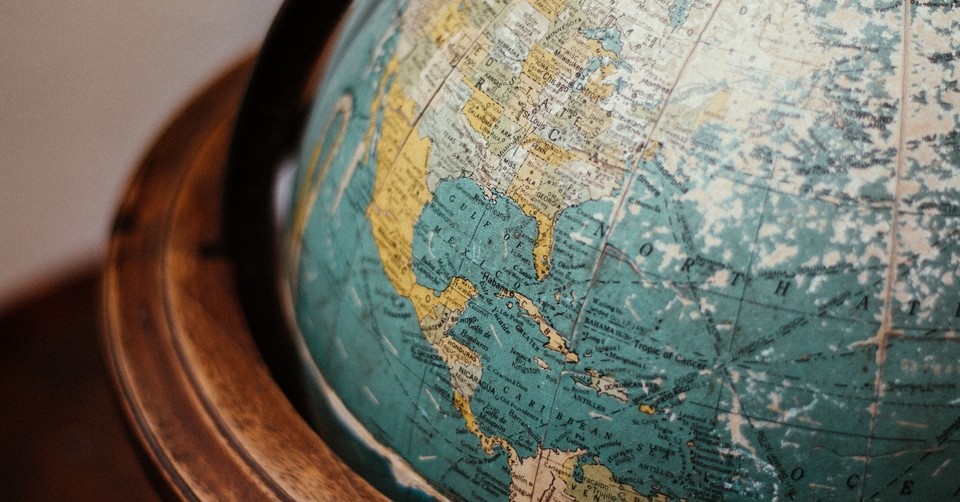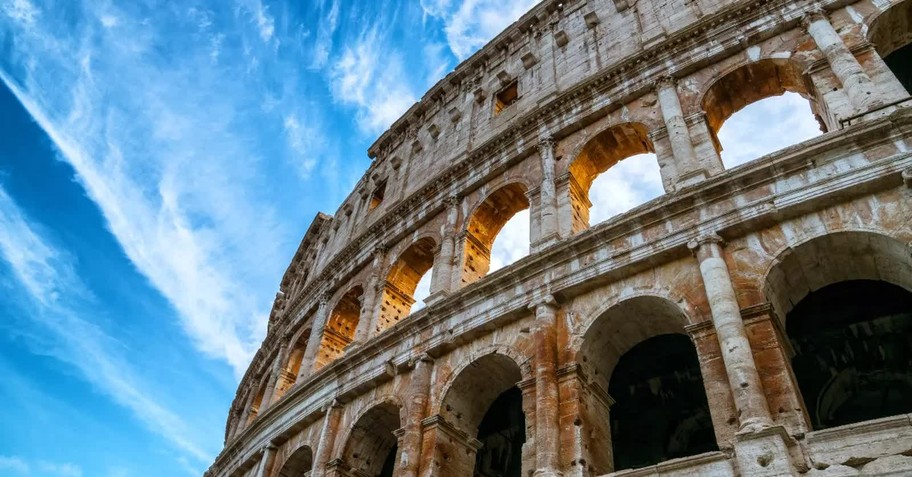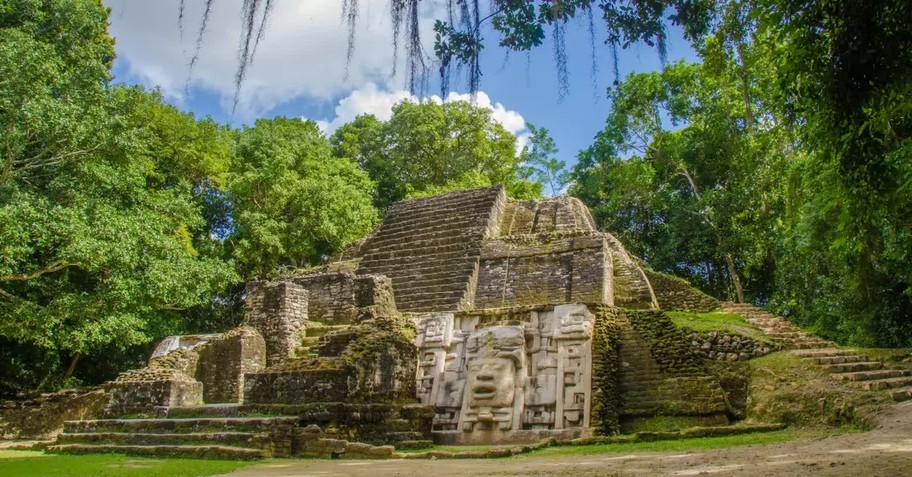What Was Happening around the Globe When Jesus Was Alive?

The spread of Christianity began at the source: with Jesus Himself. He gathered His disciples and explained the gospel to them. They went on after His resurrection to tell others and grow the church. Some, like Peter and Paul, traveled far and wide to spread this important message to more people.
As a history minor and longtime nerd, I had to ask: what was the rest of the world up to when Jesus walked the earth? Think about it, the Creator of the Universe wrapped Himself in flesh and came down to earth to live as a man for about 30 years – and most of the world had no idea.
It’s rare throughout history to find something that impacts the whole world. Even world wars and catastrophic plagues didn’t impact everyone, and you’d be hard-pressed to find a good event that does so.
Except Jesus.
In 313, a mere 300 years after Jesus’ birth, Emperor Constantine made Christianity the official religion of the Roman Empire. It spread through the Roman-occupied world, and missionaries would eventually take it to the corners of the globe. This process wasn’t always done gracefully or in a loving way, but God always has a plan, and throughout history He always has God-fearing men and women in the field, telling others about Him.
Jesus’ birth, life, death and resurrection was meant for all mankind. So even if these ancient peoples didn’t know (or necessarily care) what was happening in Jerusalem in the first century, it was still done for them.
Some Quick Notes on the History
We’ll be looking at roughly 1-100 AD. According to Britannica, Jesus was born between 4 and 6 AD, and died in 30 AD, which about matches up with what most biblical scholars believe. But when looking at the ancient world, it is hard to stick to that small of a timeframe. Some of the nations I researched were in power for 1000 years, and scholars can break that up into chunks, but it’s just impossible to know what was happening in say, exactly 22 AD. Most ancient artifacts are dated for a timeframe, not an exact date.
So we’ll look at what was going on roughly around the time Jesus was alive.
You’ll also see two different ways of marking time in this article. I prefer the terms BC (before Christ) and AD (Anno Domini, the year of our Lord). But many historians have switched to different terms: BCE (before the common era) and CE (common era). It’s a secular term that removes God, but the two are interchangeable otherwise. BC = BCE. AD = CE.
Finally, I am not a professional historian, but I did my best researching this article! I’ve studied history and historiography in college, so I do have some experience with this. But if you see anything that’s incorrect, please let me know and I’ll be happy to change it!
Ok, let’s dive in.
Photo credit: Unsplash/Adolfo Félix

What Was Happening in Europe?
Even if you don’t know anything about world history, if you’ve read any of the New Testament, you are familiar with the Roman Empire. This superpower controlled all of the land that Jesus and His disciples traversed. Indeed, they controlled much of the map at this point in time.
This map shows that in 8 AD, when Jesus would have been a child, the Roman Empire controlled much of modern-day Europe, as well as large swaths of the Middle East and northern Africa. England at this time is not under Roman control, but would be by 43 AD, when Emperor Claudius began conquering.
The Roman Empire was massive and powerful, spreading it’s influence wherever it went. For all the trouble they caused the Jews in the New Testament, the Roman rule wasn’t necessarily a bad thing for the rest of the world. They brought trade, solid forms of government and art, and their power brought a peace that was known as the pax Romana. Britannica defines this period as “a state of comparative tranquility throughout the Mediterranean world from the reign of Augustus (27 BCE–14 CE) to the reign of Marcus Aurelius (161 –180 CE). Augustus laid the foundation for this period of concord, which also extended to North Africa and Persia.”
Aside from the Roman occupied areas of the map, Europe was mostly filled with small tribes and people groups. The Celts had all but disappeared by the start of the first century – Wikipeda says they were mostly restricted to Ireland, western and northern Britain and Brittany. The seat of culture and power was wherever the Romans settled.
Daily Life in Ancient Rome
By the first century, the Romans were enjoying such luxuries as running water, as well as early newspapers and surgical tools.
Family life was also important to the Romans, and sole control of how the family was run was left with the paterfamilias, or male head of the family. This meant he could determine life or death for family members, and even sell his children into slavery. However, the wife was not exactly powerless in this situation – she had the run of the household itself, and everything in it.
Ancient Romans had many opportunities for leisure, from dramatic performances, to relaxing at the public bath.
God’s Plan for Ancient Rome
Rome was by no means the only powerhouse at this time, but it was by far the largest and had the greatest influence on shaping this part of the world. It’s easy to see why God would send His Son to live under Roman rule. Jesus’ mission was to die for our sins – that would have happened no matter what nation He lived in. But living in the Roman world helped to get that message spread far and wide a quick few centuries after the resurrection.
Photo credit: ©Getty Images/NanoStockk

What Was Happening in Asia?
To the east, the Han dynasty was in power in China, but I found that during the time Jesus was actually alive and preaching, there was an unsuccessful uprising.
Time Maps describes how in 9 AD, Wang Mang seized the throne and attempted to return to “pre-imperial days, for example by vesting a new nobility with feudal powers.” The coup did not go well, and Wang Mang succeeded in angering both the ruling elites, and the peasants. The capital was overthrown by a massive peasant revolt, and Wang Mang was killed. “Order was eventually reestablished by a member of the Han imperial family, and the Han dynasty was reestablished in power in 25 CE by the emperor Guangwu,” explains Time Maps.
Under the Han dynasty, China grew and thrived until roughly 220 AD.
Further east, Korea is in the midst of the Three Kingdoms Period, which lasted from 57 BC-668 AD. World History.org explains that “The system of government of the three kingdoms was much as it would remain for the rest of the history of ancient Korea.”
And in Japan, things looked rather similar. The Yayoi period in Japan lasted from 300BC to 300AD, which means Jesus’ life and death happened smack in the middle. Similarly to Korea, World History.org explains that this period “set the foundations for what would now be known as medieval Japan … The development of clans and kingdoms as well as the class system would eventually lead to the system of daimyo, samurai, and the Chrysanthemum Throne with a line of emperors that would remain unbroken to this day.”
Daily Life in Ancient China
Education was becoming important in the Han dynasty, but only for men. Through education and difficult exams, men could climb the social ladder. However, most peasants remained illiterate and thus didn’t have access to this upward mobility.
Women had few rights in the Han dynasty, and were expected to keep up an attractive appearance; archaeologists have found many boxes of makeup and cosmetics from this time period.
Respect for the elderly and ancestor worship was also important for ancient Chinese culture, often with several generations living together under one roof.
God’s Plan for the Nations of Asia
All three of these nations are in the midst of organizing into cohesive, thriving world powers at the start of the first century. They are setting foundations that will last for hundreds, or even thousands of years. In the next few decades after Jesus’ resurrection, religions like Confucianism will start to spread and take hold in China.
It would be quite a while before Christianity came to Asia, but God’s plan for salvation is far-reaching. He knew that they needed a Savior, and Jesus knew His mission was for them too.
Photo credit: ©Getty Images/IoanaCatalinaE

What Was Happening in Africa?
Researching ancient Africa gives many of the same results as ancient Europe – the notable places are mainly controlled by Rome.
At this time, the Egypt many of us are familiar with – complete with pyramids and Pharaohs – has passed into history. Egypt fell to Roman rule in 30 BC after the death of Cleopatra IIV, who had joined with Roman commander Mark Antony (anyone up for some Shakespeare?)
Further south, other African nations were growing and gaining power in Jesus’ time. The Kingdom of Aksum was one such. At its height, it covered modern-day Eritrea, northern Ethiopia, eastern Sudan, Yemen, and southern Saudi Arabia. “By the 2nd and 3rd centuries A.D. it was a trading juggernaut,” according to History.com. Aksum thrived as it grew in the first century, due to its prosperous agricultural lands and good weather for farming.
Many of the other powerful African nations we are familiar with would not appear on the map for several hundred more years.
Daily Life in Ancient Africa
This website lists a few different jobs for the average citizen in an ancient African nation: farmers, traders, artisans, warriors and slaves.
We learn a lot about a culture based on its art, and African art is as diverse as the people living there. Terracotta pottery heads have been found and dated to between 500 BC through 200 AD. Contemporary African Art describes them in this way: “Their strong formal elements and expressive quality places them at the start of the African sculptural tradition. They are remarkable for their sense of caricature and have a strong sense of style showing elaborate hairdos and ornamentation.”
God’s Plan for the Nations of Africa
Aksum also holds another distinction for us: four centuries after Christ, it would become one of the first nations to adopt Christianity. This nation may have been distant from the events of the Bible, but they would be one of the first to embrace this new religion.
Photo credit: ©Getty Images/klazing

What Was Happening in the Americas?
Our final stop on this world tour is the Americas, and the main powerhouse at this time was the Maya. History.com says that the Mayan civilization ran from 1800 BC to 250 AD.
History.com also explains that the Preclassic Maya were building pyramids, cities and stone monuments – traits of a much more advanced civilization – thousands of years before Christ. By the time Jesus was born, this was already a highly developed nation.
However, Lumen Learning explains that murals found during the Terminal Preclassic period show “sacrificial and inauguration rituals, such as bloodletting, that were practiced around 100 BCE. Elites were expected to perform these painful rituals in reverence to powerful deities.” According to World History.org, bloodletting was the most common sacrifice ritual in the Mayan faith.
The Maya began to decline between 100-250 AD, but other groups, like the Nazca and Zapotec Civilizations were also growing and thriving at the time of Christ. The Aztec empire would not become a powerhouse for close to a thousand more years.
Daily Life for the Mayan People
History on the Net describes the social pyramid for the Maya: at the top were kings and nobles, priests, scribes and government officials. Next were artists, traders and warriors. Commoners filled the bottom rung of the social ladder.
Women worked in the home, while the men tended to the fields, growing crops like maize, chili peppers, avocados, tomatoes, onions and other staples. They had no horses or pack animals to help with this work, so it was all done by manpower. When they weren’t working, the Maya had at least one religious festival a month where they could enjoy food and festivities.
God’s Plan for the Native Americans
The Americas are separated by an ocean from Jerusalem and all that happened in Jesus’ lifetime. The people there would not hear the message of the gospel for many years, and even then it would be tinged by man’s sinful desire to subjugate the native tribes. But as Genesis 50:20 reminds us, “you meant evil against me, but God meant it for good.”
Although many explorers and settlers who came to North and South America in latter centuries mistreated, or even wiped out, the native people there, there were still some faithful men and women who spread the message and hope of the gospel, so that every tribe, tongue and nation would know of Jesus.
Photo credit: ©Getty Images/SimonDannhauer

Why Does This Matter?
Whew, that was a lot of information! So why bother researching and reading about all this? Jesus didn’t speak to the peasants revolting in the Han dynasty. He didn’t have letters sent to the Maya with their grand pyramids and temples. He wasn’t influencing the political machinations of the Roman empire. Did He care about them? Was He thinking about them?
Yes.
“’Very truly I tell you,’ Jesus answered, ‘before Abraham was born, I am!’” (John 8:58).
“And he made from one man every nation of mankind to live on all the face of the earth, having determined allotted periods and the boundaries of their dwelling place” (Acts 17:26).
“And Jesus came and said to them, ‘All authority in heaven and on earth has been given to me. Go therefore and make disciples of all nations, baptizing them in the name of the Father and of the Son and of the Holy Spirit’” (Matthew 28:18-19).
God is omniscient, which means that He knows everything. He laid the boundaries of the nations. He raised up rulers in the greatest dynasties, and the smallest tribes. He has a plan for His gospel message to reach all of them, and that began the day Jesus was born in Bethlehem.
All of the people in these nations have one thing in common: they are all suffering under the yoke of sin. They all need a Savior.
Even if they didn’t know that He had arrived at the start of the first century, even if it didn’t impact their lives for generations, it was still a crucial moment in world history that united all nations on earth.
Christianity stands apart from every other world religion. It is the only one where a Holy God cares personally for you. No other God would come down to earth and die for the sake of His followers. The message of the gospel is unique. It is radical. And it is the right message for every person on all corners of the globe.
More from this author
3 Reasons It Is Bad Theology to Promise Single Christians a Spouse
5 Powerful Worship Songs to Keep You on Pace
Extroverts: Here Are 3 Ways You Can Challenge Yourselves
Photo credit: ©Getty Images/Rawpixel
Originally published November 29, 2021.








